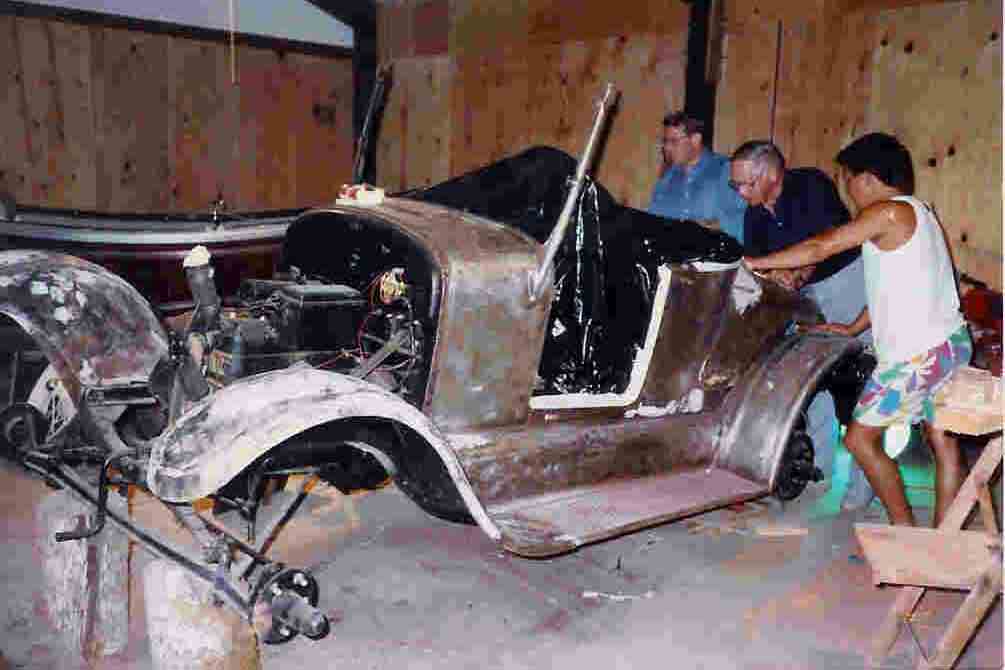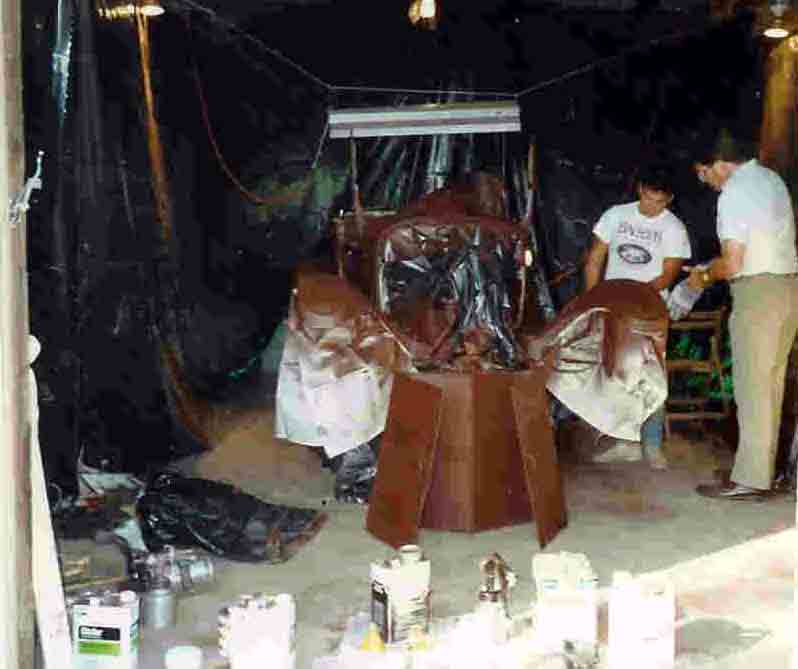

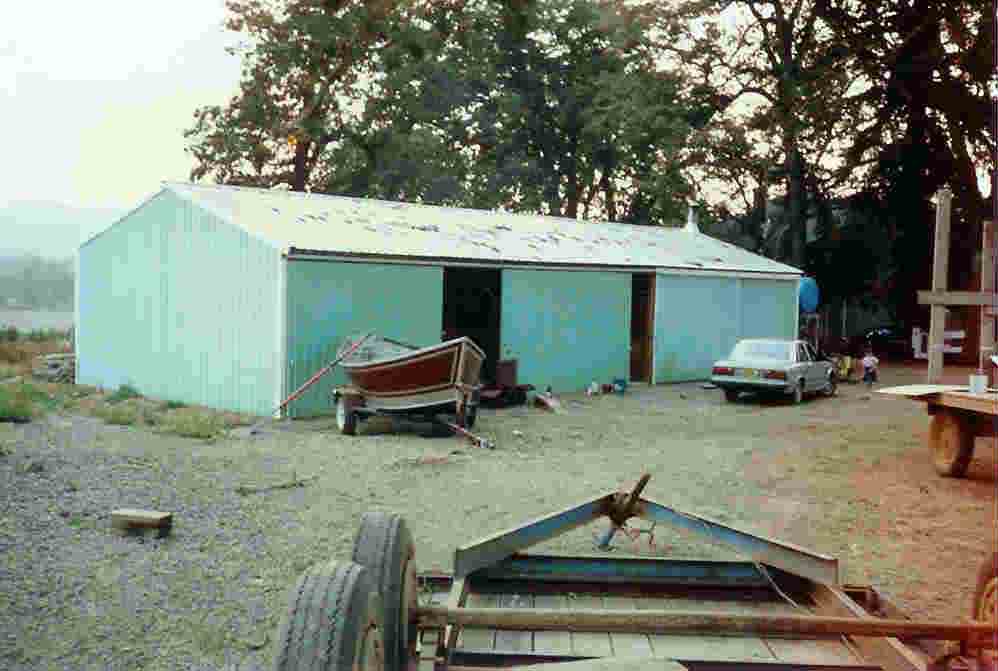
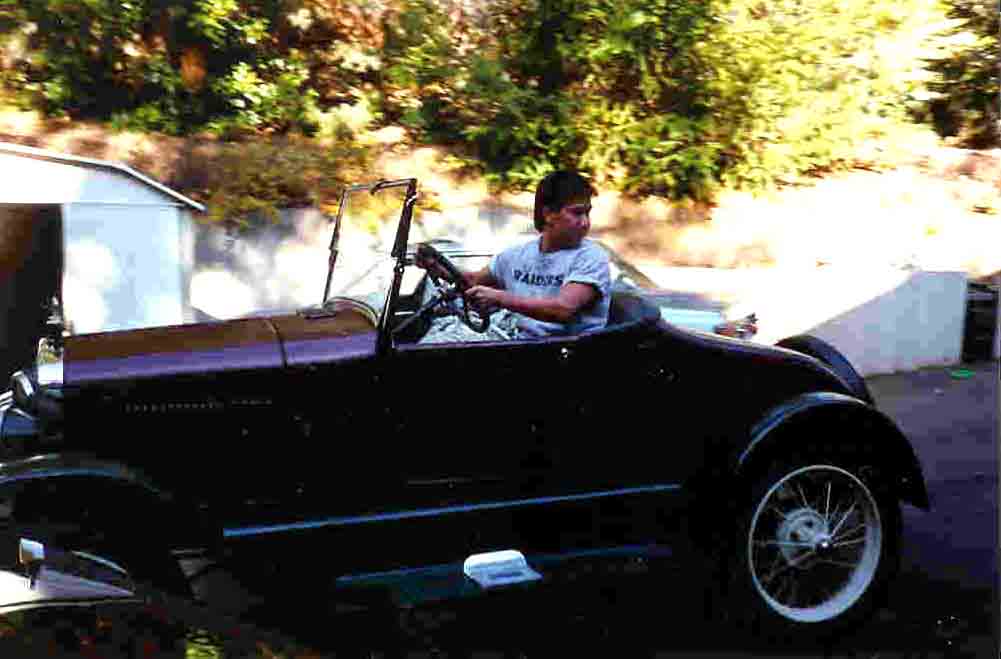
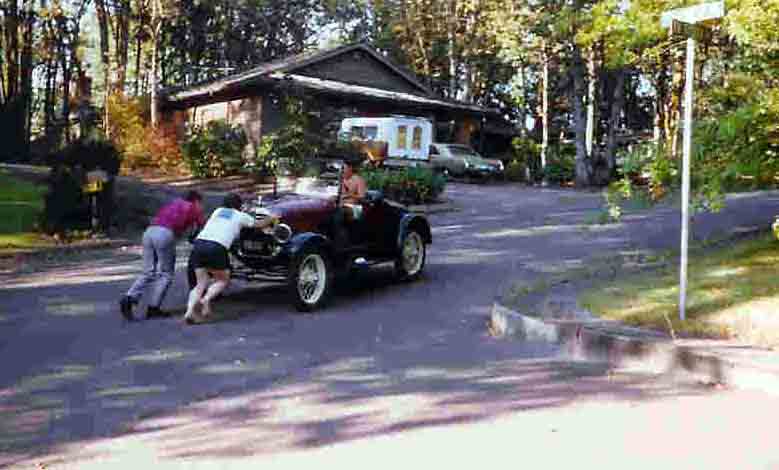
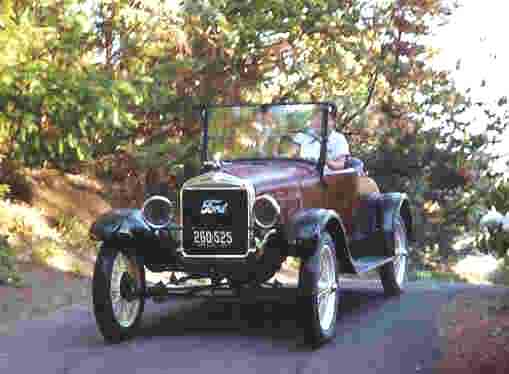
Old Henry Ford said that you could buy a Model T in any color, as long as it was black. Those words were short-lived because in 1927 - for the first time - Ford's Model T came in an option of three colors - burgundy, channel green and cream color - in addition to the black.
Bought as a wedding momento in 1969 in Chico California, the 1927 Ford Roadster 2-seater ran when first bought, but barely and it was missing many parts, such as a noticeable deck lid. Mother always tried to get to get us to sell it as it took up space. Luckily, we did not. This was a first classic car restoration.
As a kid, we spent endless hours air-driving the car, which was parked in the family garage. It was always dreamed of driving it for real someday.
Through the family business, father often traveled to the Native American reservations in Eastern Oregon and Central Washington as we listened to his latest business prospects.
We took notice that many cars looked like the Model T in our garage and were strewn in the yards on these reservations. The desert-like environs were perfect for helping keep the old cars protected from the elements - A real treasure trove. So, from the age of 11, we skirted barking dogs, knocking on doors and asking if we could take parts missing from our car in their yard. Classic car books from the local library gave excellent illustrations to figure out the exact pieces needed and insure that I was getting original parts and how to remove them.
In junior high school, in Mr. Green's vocational class, we found a highly detailed picture of the original rear brake light and created a replica because we were unable to find similar parts anywhere else. Grandfather was good with his hands and his advice guided us through the process.
By summer of 18, we had nearly all the missing pieces, collected over the years. Many, of which (speedometer, etc.), we had trouble finding and resorted bought out of Hemmings Motor News - the bible of classic car buffs.
Model T Background
The '26 and '27 Fords had the exact same frame and chassis. The only other distinguishing characteristic was that '27 would mark the first year that Ford offered metal wire rims in addition to wooden rims. According to the serial number on the engine, the car in our garage was one of the last 50 made out of the millions that came off of the lines at the Dearborn Michigan plant, which closed just this year. The following years model 1928, would be the first year of the Model 'A' and many components reflect that the 1927 and 1928 models were transition years, such as the electric windshield wiper, rather than the hand wiper and the wire wheel rims.The radiator and trim was all delicately plated in nickel (they did not have chrome yet). The car cruzed a whopping 35 MPH, or at least that is the fastest we have gotten it up to. Okay... Maybe 45 MPH going downhill.
Driving the car is a totally different experience and quite a workout, requiring every body part you can muster. There are three foot pedals, but none are the accelerator as common sense might dictate. The accelerator (throttle) is located on the right side of the steering column. On the left side of the steering column is the spark for controlling the speed at which gas is ignited. Driving involves listening to the engine, i.e. choking sound versus racing sound.
The far right pedal is the parking brake, as the hand brake is the stopping brake. The middle pedal is the reverse and the far left pedal is the clutch/two-gear shift, i.e. high and low, with a neutral in the center. To drive in reverse, you have to push the clutch in half way, then the center pedal down. [once you learn how, you never forget]
One final point: Electric starters for an ignition would not be available until the launch of the Model A cars one year later, i.e. 1928. Therefore, as can be seen in the photos, in the front of the car and under the radiator, there is a hand crank. The crank is quite dangerous. The crank handle turns clockwise; however, once the engine ignites, the piston arm rotates counter-clockwise. Hence, if you do not let go of the crank at the precise moment of ignition, the crank will swing the other direction and thud against the top of your forearm. Apparently, this broke many arms in the old days and from experience can attest.
During the winter months and when having trouble starting the car, there is also a choke located on the right side of the dashboard. Pulling out and a full turn of the choke is needed to start the car. Once idling smoothly, the choke can be turned back to one-quarter of a turn.
They did not have electronic fuel injection in the 1920s, so gas flow from the tank is gravity fed through a copper line located at the front of the tank. The gas tank is located behind the firewall and is situated high above the engine for this purpose.
Running out of case was a common problem, given that there is no gas gauge other than using a flashlight to peer inside the tank. So when driving up hills, if you are short on gas, do not be surprised if you have to turn the car around and back the car up the hill, as we are doing in the picture.
The Pros
As a kid, we used to see several old Model Ts parked in the windows of a building south of town and at 16, after earning a drivers license, we drove out to investigate these old cars on display. A kind of grumpy old-timer 70-something named Roy Taylor greeted us. He showed us to the back of his long warehouse, where he stored over 100 older Model Ts, '20s - '40s Rolls Royce cars and '30s Packards that he had completely and immaculately restored to their original glory. Taylor would eventually show us how to drive the car, but he suggested that we seek out an old man called Blue for help with the bodywork and painting.It was "Old Blue" who eventually taught us how to restore the car. They called him Old Blue because he like to paint cars blue. We never learned his real name, but it may have been "Held," since when we met him for the first time, he was on the roof of his local sales and repair shop Held Pontiac, repairing holes in it with a can of hot tar. At 93 years of age in 1988, it was impressive he could even walk.
Old Blue apparently worked on the original Henry Ford assembly line of Model T cars in Dearborn Michigan. He had a huge collection of antique body tools, some of which he gave to us for working on the body of my car.
George Riehl, a car enthusiast that once worked for at the family engineering company and maintained his own collection of classic Packards and Corvettes. George once said that, as a collector car judge, he can tell when modern techniques have been applied to restoring classic cars. For example, since the 70s, it became commonplace to use a plastic/fiberglass compound, called Bondo, to fill imperfections in the body. However, this can easily be detected by running a magnet over the steel body to detect weakness in magnetism.
Old Blue taught us how to beat the judges (instead of using Bondo) and he showed us the process used before the innovation of Bondo, by making welding rods out of Plumbers Lead. First, you make a mold out of wood, melt the lead in a bucket, then pour the liquefied metal into the mold. He explained that Plumbers Lead contained other metals that are conducive to magnetism and is the way to beat the judges.
To actually apply the lead filling, first you use an acetylene torch to heat the damaged metal surface of the body part, then you take you homemade welding rod and start filling in the surface. A wooden spoon would then be used to form the liquid metal. To keep the spoon from sticking you apply honey to the spoon and this acts as flux does when soldering. You then use a hand-held grinder to plane the surface.
By age 18, we were ready for the restoration.
[I understand that old Blue died a few years after our car was completed. I did once drive the car by his shop to show him the results of the handiwork he taught me. Why did Old man Taylor and Blue spend the time helping with my restoration? I really do not know; however, I get the impression that they enjoyed passing their knowledge onto somebody young that would listen and carry on their tradition.] ...RIP guys.
The Restoration
1988 was also the year that Mr. John Dilworth, an old college friend of the family was running for county commissioner. He had a big farm located 20 miles outside of town called Belfountain, near Monroe Oregon. The farm had a big 4-stall garage next to his barn. In the first stall, he kept his fishing boat, the second - a tractor, the third - his farm tools and the fourth was empty.He made us a deal. If we drove him around in the car in a parade for his election campaign, he would let us use the empty stall on his farm during the summer. It was a done deal - spending 14-hour days, everyday, during the summer following high school graduation, working on dismantling the car according to pictures from a book, labeling the pieces and restoring them to their original luster.
You can see the results of the restoration in the picture at the top of this page. Except for the wiring, lighting, battery and tires, this car is 100% original and looks just as it did after rolling off the assembly line in 1927.
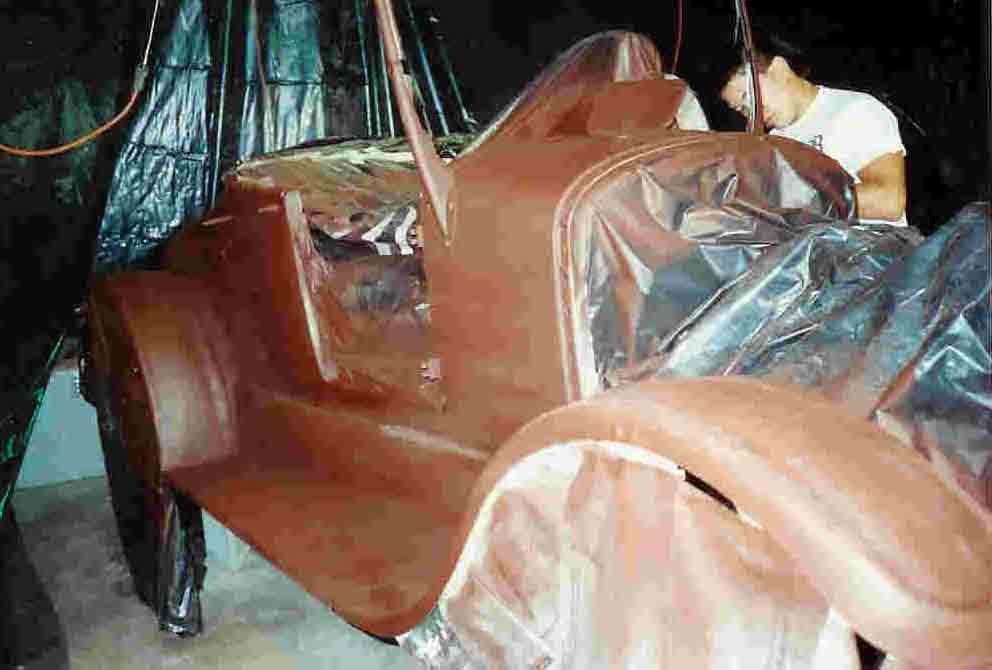
Wanted
Although considered an after -market part in the '20s, we would like to get some
NOS (new old stock) front and rear original bumpers that would fit a 1926-1927
Ford (all styles used the same chasy (i.e. Roadsters, Sedan, Coupe) so will
fit.
Considered optional after-market purchases because so few cars on the road to bump into, if you are in the market of selling, please contact us: tag@teitown.com
